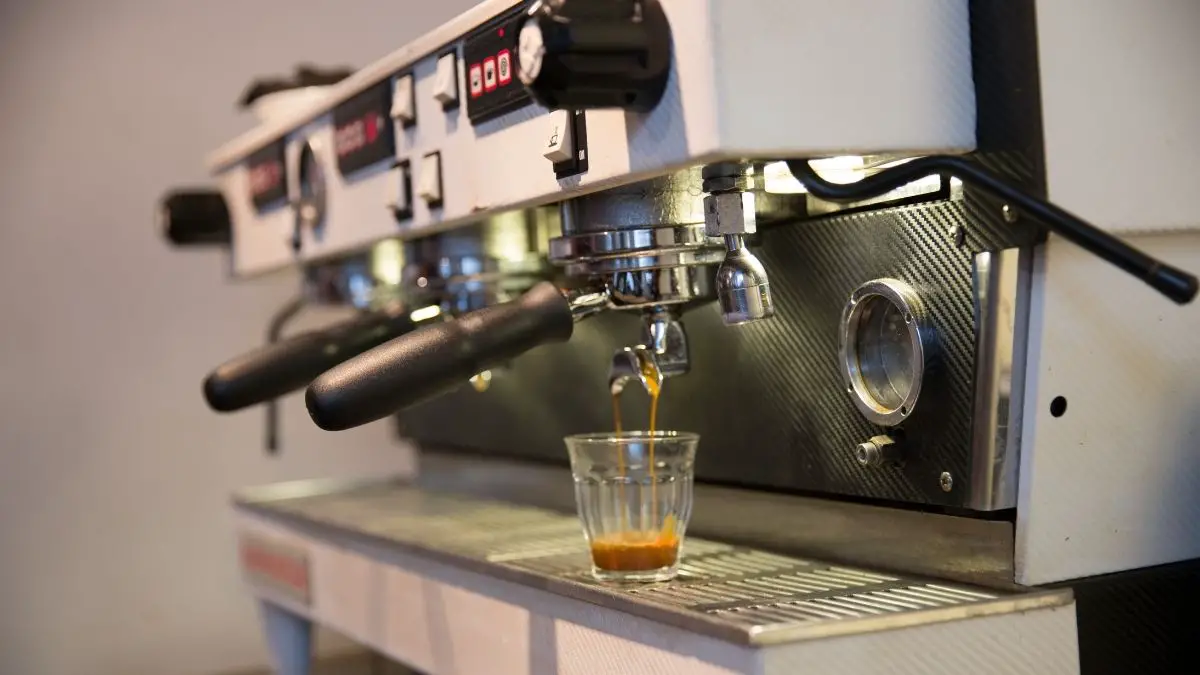Espresso machines that are decently suitable for home use range from $400 to $2,000. Some do cost a few bucks around $100, but there are quite a few notable drawbacks when it comes to the features and coffee quality the cheaper you go. We’d be discussing more home-use espresso machines since most commercial machines would fetch over $3,000 to $18,000 worth and I’m pretty sure you didn’t come here trying to decide whether to buy or not buy something that expensive. If you’re rearing up or planning to rear up a high-quality business standard like Starbucks, then you should get one of those incredibly pricey and top-of-the-line machines.
Good-quality espresso machines are expensive, they’re complex machines after all. So if you’re aiming to be a coffee hobbyist and an espresso aficionado, then you better not cut corners when buying a machine because they’re usually as expensive as they are effective. So they’re absolutely worth your big bucks.
How we’d probably define a product that is worth buying is if it gives you what you need and what you want, at a fair price. Ease of use, low maintenance, upgrades, and durability also account for a product’s worth.
It’s very unlikely that you’d get a great quality espresso, one that you’d probably get from a cafe like Coffee Project, from a machine that only costs a little over $100. However, if you are on a strict budget, there are a few good ones that may suit your taste buds anyway, just don’t expect too much.
Not all espresso machines are that great though. Some of them are just expensive due to branding, but not necessarily well-equipped. Yet again, most of the cheaper ones, even the best out of the cheapest by a long shot, don’t easily compare to those that are pricier, and there are quite a few reasons for that with regards to product quality, mechanics, ergonomics, and the coffee itself.
So that being said, what are things that you should consider when buying an espresso machine, why you should opt for a fairly expensive machine, and what features you should look for, will be dis.
Why Choose An Expensive Machine
Well first off, what is termed to be “expensive” is a relative topic. $2,000 for a coffee machine may be quite expensive for a lot of people earning minimum wage, while it may appear cheap or affordable to those who are more able or perhaps have professional coffee careers or a hardcore dedication to espresso-making.
However, the point is that espresso machines ranging from $800 to $2,000 would usually give you a very good espresso, whether you’re experienced or not, and it wouldn’t be too much of a hassle of pulling a shot to clean your portafilter. The amount of control and experience you get from these machines are also pretty enjoyable.
Meanwhile, machines ranging slightly below or above $100 may give you a more difficult time having to do much of the work and tweaking by yourself, and also may not produce the good shot of espresso that you crave. If you’re on a strict budget though, don’t worry, as there are a few ways to get around the cheapskate problems.
The Build
Most, if not all, cheap espresso machines have a plastic exterior, with the only exception of their boilers being commonly made with stainless steel, as they’re quite the integral part of the machine that makes your coffee. Of course, the portafilter would also be made of the same quality metal as the boiler, but we’ll get to that later.
While most expensive machines have more metal parts, not always, they’re usually built tougher and obviously better than the cheaper ones. The importance of this is they’d last longer, and are more robust and well-adaptable to continuous use, even when you’re brewing shot after shot for your friends and family.
The heft or weight of a machine also makes it easier to lock or remove your portafilter in and out of the group head, as you’d have to grip the lighter ones while you’re installing the portafilter just to keep them in place. This is apparently an ergonomic advantage for expensive machines.
So the more metal parts there are in an espresso machine, the longer they will last, the easier you can manage the portafilter, and the more adept they will be when brewing and extracting for a lot of cups. The downside of this however is that you have to constantly wipe off your fingerprints from the steel exterior.
The Pressure
Maintaining a constant and optimal water pressure is the basics of espresso-making, as this is the most important factor of creating crema and a great-tasting shot. So when we’re talking about optimal pressure, we mean 9 bars of it, nothing less and nothing more.
A few espresso machines, cheap or expensive, may have a pressure gauge that may not always be accurate from machine to machine, but as long as they can maintain the 9 bar threshold or 130 psi, it won’t be too much of a problem. On the other hand, those who don’t have pressure gauges aren’t a real problem either as they’re strictly programmed to brew at a decent pressure around 9 bars. Some machines do offer higher pressures such as 10 or even 15 bars, but that’s not exactly a good thing.
So why is a certain amount of pressure that important? Well first, the Specialty Coffee Association defines that 9 bars of pressure are the espresso average and standard. More so, an e-book on espresso-making mastery by Scott Rao dictates that as extraction pressure increases toward 9 bars, you get the most effective flow rate in your puck, but as the pressure surpasses the 9 bar threshold, the water compacts the cake that it becomes harder for water to pass through, resulting in an immediate decrease in water flow that causes channeling.
Channeling is bad, but sometimes inevitable for an espresso shot. It happens when either there’s too little or too much pressure in your brewer that causes water to flow through a single specific point in the puck, resulting in an uneven extraction. This usually gives you a sour and harsh shot of espresso.
Fortunately, we do explain in detail how you can get around this and perhaps even avoid it completely.
So most importantly, your choice of espresso machine has to be a model that can easily get to the 9 bar threshold and maintain that in most of the shots you pull. You don’t have to be skeptical about pressure gauges, just find the one that says it brews at 9 bars of pressure, and good quality at that.
Problems of channeling, pressure profiling, and pre-infusion are whole other topics that deserve an article by themselves, and so stay tuned in for those.
The Temperature
A good-quality espresso machine should be able to deliver a standard brewing temperature around 200° F and be able to stay consistent in that range, at least most of the time. In cheap espresso machines, temperature consistency is a novelty they simply don’t achieve, especially when you’re brewing shot after shot. Some of them heat water way too high and end up serving you a burnt-tasting espresso, too bitter and annoyingly stingy.
We would suggest you get a fairly expensive machine in which you can control your brewing temperature. Dark roasts often extract well at lower temperatures such as 176° to 194° F, medium roasts at 185° to 197° F, and lighter roasts at 192° to 203° F. Temperature is not the overall determining factor of a good-tasting espresso, but it’s very important that we understand why we brew at certain temperatures and how to tweak the temperature to our desired outcome.
Really, it’s not that important as long as you’re machine can maintain the optimal brewing temperature for espresso, shot after shot after shot. If there are any variances in the temperature, which is indicated in a gauge in some machines, there’s no need to freak out if the machine does that time and time again, but if the variation is sudden, then you might want to hold on to your warranty.
Again, temperature profiling as you may have heard is a story for another day.
The Portafilter
Second to the pressurized boiler, the portafilter is the next most important component in an espresso machine, and although it may not seem to be that much of a complex gear, the type of portafilter that you’d use is a big deal.
Most cheap espresso machines come with a pressurized portafilter, and this is essentially a metal basket with one tiny hole in the middle. This type of portafilter is designed upon the presumption that you, as a consumer, don’t have access to a good-quality grinder and you’re more inclined to buy coarsely-ground, pre-ground coffee beans. It’s not necessarily a bad thing, it works well with coarsely ground coffee, but it doesn’t make that good of an espresso shot.
The reason for that is it’s not ideal to use a pressurized filter with the standard grind size of espresso, which is pretty fine. What it usually does is create a channel through that tiny hole that yields a very distasteful shot of espresso, and it’s also prone to clogging, so, more maintenance work on that.
What you’d want to have is a naked portafilter or one that comes with one layer of a metal mesh, since pressurized portafilters do have that metal mesh, but the second, one-holed layer is a bit counterproductive. More expensive machines may have both types of filter, but if you have your own, good-quality grinder, just grind your espresso beans to the right size and use a traditional portafilter.
Can you exchange the stock basket with a naked basket in cheap espresso machines? Yes, you probably can, but that doesn’t really make the espresso any better, simply because the cheap machines just can’t seem to get the pressure and temperature precisely and consistently. Since you have less control over those factors in a cheap machine, even when you’re grinding right and using a naked portafilter, you just can’t expect a great shot to come out.
Bottom Line
So here’s a good question. If you had $100, should you just go ahead and buy an espresso machine that costs less than that? I’d say you better save that up and buy a much better option, which would be more expensive, but it’s better than settling for something too less. When it comes to being a coffee hobbyist and espresso aficionado, you better not cut corners or you’ll end up wasting more money than you should.
Then again, there are a few good espresso machines out there around $100 to $200, and we’ll get to that in another article sometime in the future, but if you really want to delve deeper into the world of coffee brewing, you better expect you’d make some notable investments to get what you want.
If you’re willing to settle for cheap espresso, which I hope you won’t, I’d rather suggest you opt for a Nespresso pod machine or simply walk into a local coffee shop and get your coffee brewed by a great-quality, commercial espresso machine, and an experienced barista.
In espresso-making, it’s a take it or leave it deal, and it all comes down to what you really want to do as a coffee fan. If you simply want a great-tasting shot of espresso, just buy one for a dollar or two at your favorite coffee shop, or if you want to learn how to make and tweak your own espresso, then don’t hold back and buy yourself a good-quality machine that would last and give you a great time of a coffee experience.

